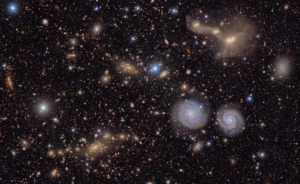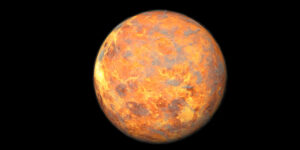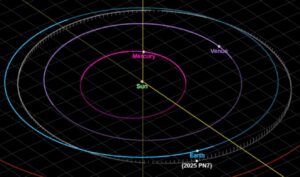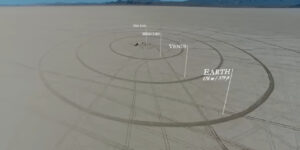Scientists have spotted a massive — and only somewhat concerning — comet with the Hubble Space Telescope.
According to researchers, an abnormally huge, icy rock is headed toward the earth and will arrive by 2031. Comet C/2014 UN271, or Bernardinelli-Bernstein (BB) after its discoverers, is 100,000 times more massive than a typical comet.
It’s four billion years old, it’s traveling at 35,000 kilometres per hour, and it’s 128km wide. That makes it about twice as big as Rhode Island or the country of Luxembourg.
Happily, it’s on course to miss Earth by about 1 billion miles on its closest approach. For comparison, that’s farther than the average distance between Saturn and the sun. If you look into the night sky when it passes, you won’t be able to see the flyby without a telescope.
BB comet in close-up
If BB did, for some reason, hit us, we could probably kiss the blue planet goodbye. The asteroid that killed the dinosaurs, called Chicxulub, was only 10 to 15km wide.
Astronomers have begun to study it in greater detail as BB flies ever closer. The frozen object is so big that it was once mistaken for a dwarf planet. More recent observations revealed its glowing tail or coma. The glow indicates that it’s still icy as it flies through the relatively warm inner solar system. (As the comet warms, parts of it sublimate, leaving a fuzzy tail.)

Image: opentextbc.ca
With the Hubble Space Telescope, the research team used a computer model to digitally remove the coma’s glow, leaving behind the comet’s “nucleus,” or core. The resulting data shows that BB’s nucleus is about 50 times larger than typical comets observed in the inner solar system. Published in the journal The Astrophysical Journal Letters, the findings make the nucleus the biggest such object astronomers have ever seen.
Lonely traveler plies the Oort cloud
For now, BB is still pretty far away — roughly 3.2 billion kilometres from Earth. It appears to be circling us, though. Another study in The Astrophysical Journal Letters in November 2021 asserted that it made its last close pass 3.5 million years ago when it passed within about 2.6 billion kilometres of the sun.
On its path, BB has recently tumbled through the Oort cloud — the jagged belt of icy rocks that encircles the solar system, potentially spanning billions of miles into deep space.






